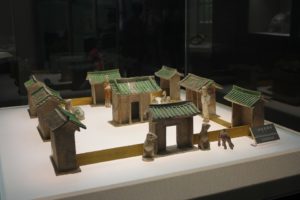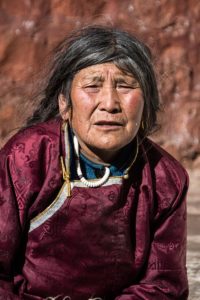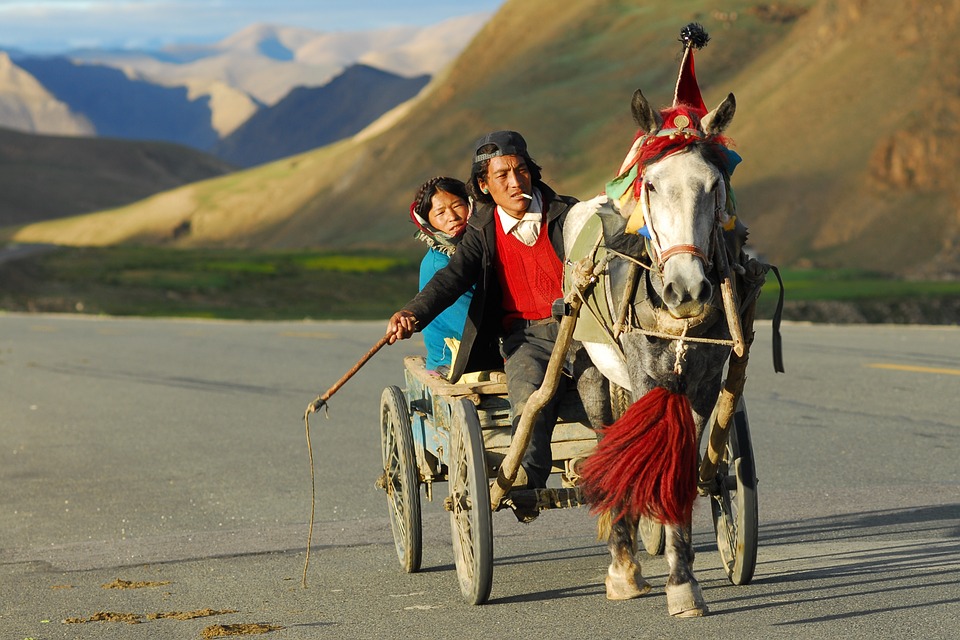In her article “Praying for Tibet,” the author hoopee writes that many years ago, the Chinese decided that a portion of their country could not be ruled by a religious leader, the “honorable Dalai Lama.” This is a gross oversimplification of hundreds of years of Chinese and Tibetan history. Such an oversimplification indicates a limited understanding (which of course also means a partial misunderstanding). However, such limited understanding is very much the norm both inside and outside China. Many Chinese people themselves have no clear understanding of a large part of their history, simply because they are deliberately not taught this information inside their schools. The Chinese government which, let us remember, is still basically a Communist oligarchy, has chosen not to shed light on this information which can only embarrass their own actions and those of their predecessors.
The Unwelcome Visitors
 Many years ago, during the T’ang Dynasty, Tibet was a completely independent country and very far away from China. At that time, China actually had two capital cities. The T’ang Dynasty instituted an aggressive policy of expansion, greatly increasing the size of their country. As the Chinese expanded to the west and northwest they began to encounter the inhabitants of Tibet. That is, the Chinese began to send their army into the foreign territory of Tibet (this is usually called an invasion!). Not surprisingly, the Tibetans were not overly accommodated to their unwelcome visitors. The Tibetan army did exist. It was quite small compared to that of the mighty T’ang Dynasty, but the Tibetans were highly mobile – mounted cavalry warriors while a large part of the Chinese were infantry – foot soldiers. The Tibetans were able to turn back the initial T’ang invaders. Not resting on their laurels, however, the Tibetans decided to take the fight to the foreigners. They mobilized their small but fearsome cavalry force and invaded T’ang China! No slouches they!
Many years ago, during the T’ang Dynasty, Tibet was a completely independent country and very far away from China. At that time, China actually had two capital cities. The T’ang Dynasty instituted an aggressive policy of expansion, greatly increasing the size of their country. As the Chinese expanded to the west and northwest they began to encounter the inhabitants of Tibet. That is, the Chinese began to send their army into the foreign territory of Tibet (this is usually called an invasion!). Not surprisingly, the Tibetans were not overly accommodated to their unwelcome visitors. The Tibetan army did exist. It was quite small compared to that of the mighty T’ang Dynasty, but the Tibetans were highly mobile – mounted cavalry warriors while a large part of the Chinese were infantry – foot soldiers. The Tibetans were able to turn back the initial T’ang invaders. Not resting on their laurels, however, the Tibetans decided to take the fight to the foreigners. They mobilized their small but fearsome cavalry force and invaded T’ang China! No slouches they!
The mighty Tibetans carved their way deep into Chinese territory, defeating at least two (if I remember my studies correctly) Chinese armies. They actually captured the western Chinese capital, now called Xi’an (Western Peace.) Well, it certainly was not peaceful at that time! After entering (and probably pillaging) the vaunted western capital, the Tibetans were just tired and bored. They had beaten everyone, and they decided to just go home, which they did successfully. The devastated T’ang Chinese regrouped and eventually recovered. The T’ang Empire grew more mighty still, but it eventually was defeated by the Sung Dynasty and new empire. Although one dynasty was replaced by another, the Chinese as a people have a very long memory. They never forgot their repeated defeats by the Tibetans.
The Illegal and Reprehensible Chinese invasion of Tibet
What is important here is that the initial Chinese invasion of Tibet was, by today’s standards, illegal and reprehensible. The Tibetans defended themselves first, and then they retaliated. At no subsequent time, however, did the Tibetans claim that because they had conquered and occupied part of the T’ang Empire that this area was thereafter part of Tibet! This is exactly, though, what the Chinese did. After their initial and eventually unsuccessful invasion, they have (more or less) always claimed the Tibetan land they briefly occupied belonged not to Tibet but actually to China.
 The period of what is only the latest Chinese invasion, that launched by the People’s Republic of China (i.e., the Communists) is explained well in the book “Seven Years in Tibet” and the subsequent movie starring Brad Pitt. The Chinese were not simply reclaiming an errant province. No, they brutally invaded a sovereign country, murdered hundreds if not thousands of Buddhist monks and nuns, overthrew a government, forcibly installed their own regime, and have cruelly crushed attempts at opposition.
The period of what is only the latest Chinese invasion, that launched by the People’s Republic of China (i.e., the Communists) is explained well in the book “Seven Years in Tibet” and the subsequent movie starring Brad Pitt. The Chinese were not simply reclaiming an errant province. No, they brutally invaded a sovereign country, murdered hundreds if not thousands of Buddhist monks and nuns, overthrew a government, forcibly installed their own regime, and have cruelly crushed attempts at opposition.
The Dalai Lama himself has never been the only religious/spiritual leader of Tibet. There have traditionally been four major denominations of Buddhists in that area. The Dalai Lama is the religious leader of only one of those groups. The Chinese government has spent a lot of time cultivating another denomination’s leader, the Panchen Lama, to gain his support of the Chinese occupation and stand in opposition to the Dalai Lama. This is a long, fascinating, and deeply troubling story that certainly does not reflect well on the Chinese.





